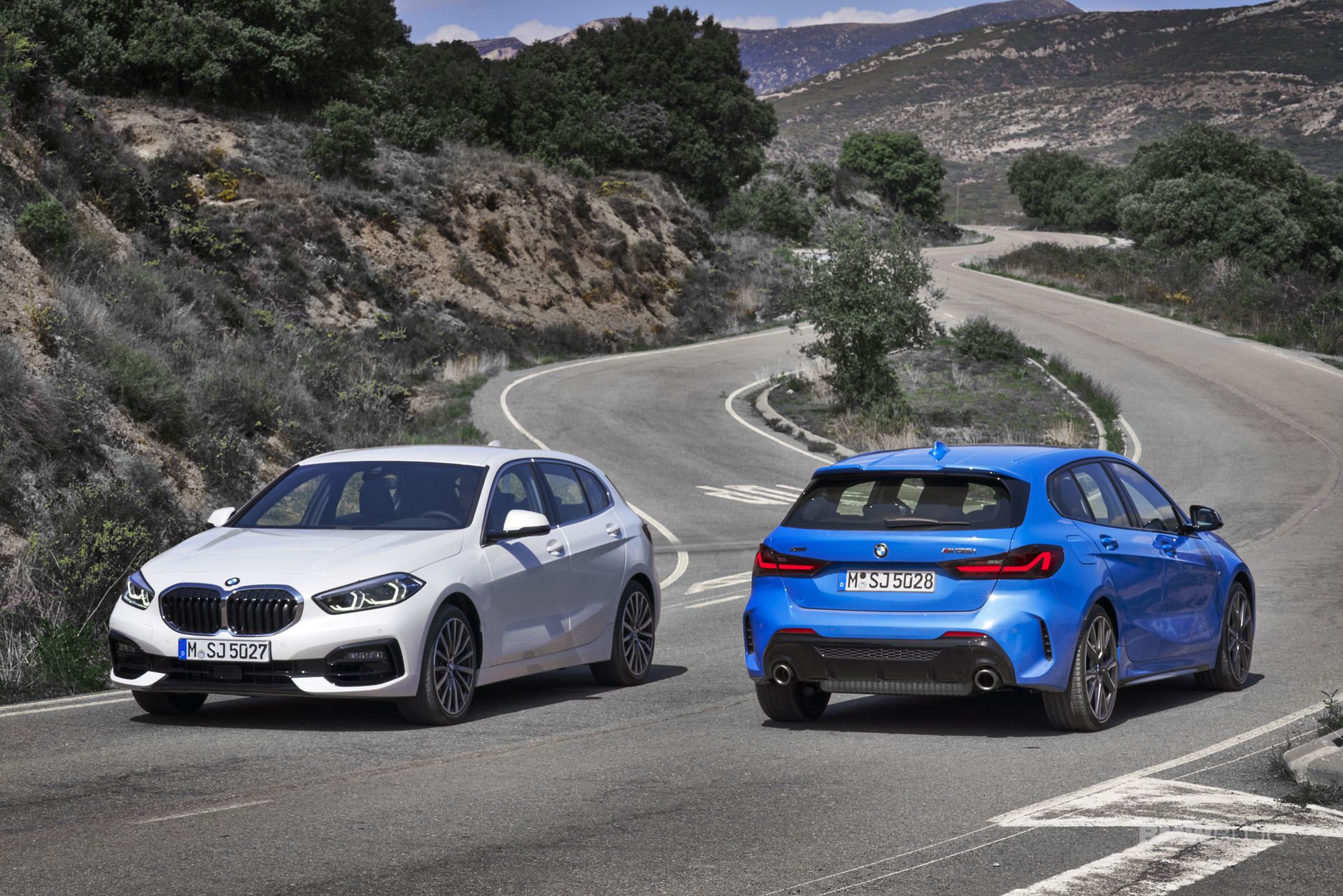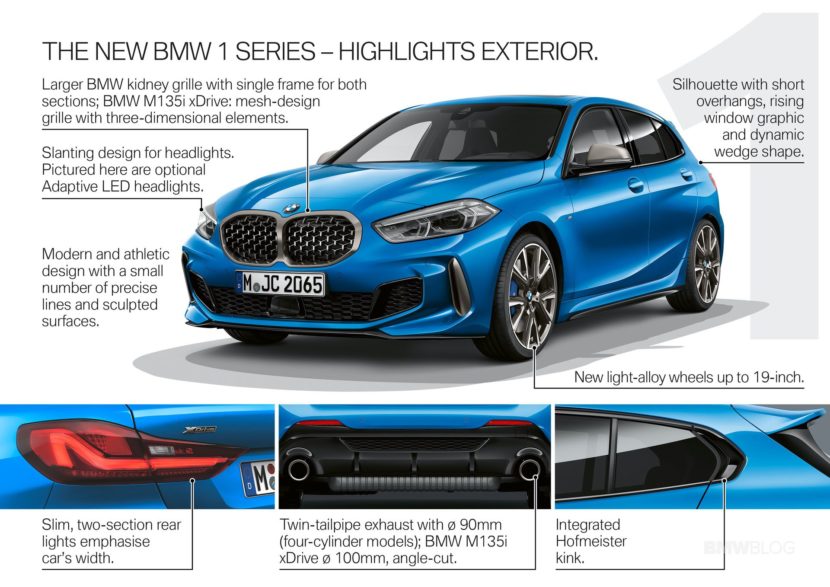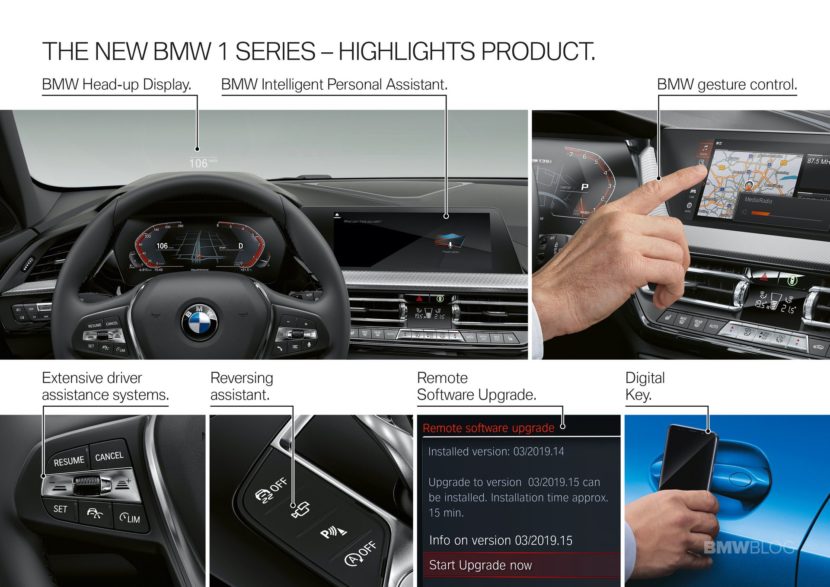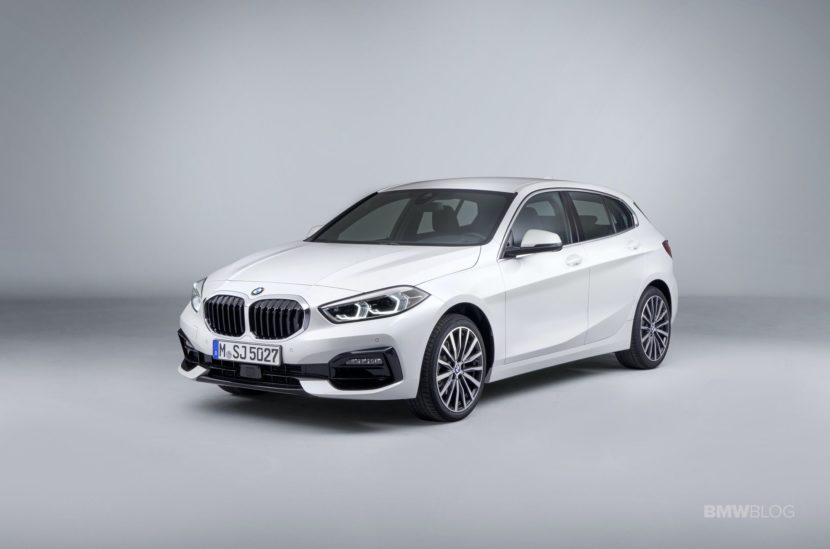The third and most tech-advanced generation of the 1 Series compact hatchback is finally here. You can catch our launch articles here, here and here, along with the first videos embedded below. For the first time BMW’s compact hatch is based on a front-wheel drive platform with only a five-door body on offer.
Design wise, the new 1 Series is a departure from the previous models with a wedge-shaped body, similar on the small BMW SAVs. The car features a short, steeply raked bonnet behind angular headlight units, and single-unit oversized kidney grilles inspired by the latest BMW models.
To increase its versatility, the 1 Series has switched to BMW’s front-wheel-drive architecture, which also underpins the MINI range, giving the car a more compact look, despite being larger than before, at 4,319mm long (-5mm), 1,799mm wide (+34mm) and 1,434mm tall (+13mm). The wheelbase is 20mm longer, at 2,670mm. An extra 33mm of kneeroom and 19mm of headroom is noticeable in the new 1 Series.
On top of more passenger space, the boot has grown 20 liters to 380 liters, with 1200 liters available when the rear seats are folded down. A 60/40 rear bench is standard, while 40/20/40 unit is an optional extra in Europe.
Alongside standard front-wheel drive, the new 1 Series also will be offered with all-wheel drive in select models, including a 306-hp turbocharged 2.0L gasoline four-cylinder gasoline. The BMW M35i xDrive model will crown the initial third-generation 1-Series lineup as a rival to the likes of the Audi S3 and Mercedes-AMG A35.
Three and four-cylinder gasoline engines are also available. The BMW 118i (fuel consumption combined: 5.7 – 5.0 l/100 km [49.6 – 56.5 mpg imp]; CO2 emissions combined: 129 – 114 g/km) is the entry- level model in the updated range of petrol engines.
In the 1.5-liter three-cylinder engine powering the BMW 118i, these measures combine to cut CO2 emissions by 29 g/km at the same time as boosting maximum power output by 3 kW (4 hp) to 103 kW (140 hp) between 4,600 and 6,500 rpm. The power unit – which is five kilograms lighter than the one it replaces – generates peak torque of 220 Nm (162 lb-ft) from 1,480 rpm all the way up to 4,200 rpm. An overboost function briefly puts an extra 10 Nm (7 lb-ft) on tap in fourth gear or higher. The BMW 118i accelerates from 0 to 100 km/h (62 mph) in 8.5 seconds and goes on to reach a top speed of 213 km/h (132 mph). It posts combined fuel consumption of 5.7 – 5.0 liters per 100 kilometers (49.6 – 56.5 mpg imp) with CO2 emissions of 129 – 114 grams per kilometer.
In the BMW 116d, BMW 118d and BMW 118i, the engine’s power is relayed as standard via an upgraded six-speed manual gearbox. New to the BMW 1 Series line-up is the highly sophisticated seven-speed Steptronic dual-clutch transmission, which can be specified as an option for the BMW 116d and the BMW 118i. The eight-speed Steptronic transmission is fitted as an option in the BMW 118d (and as standard in the BMW 120d xDrive) and the eight- speed Steptronic Sport transmission in the BMW M135i xDrive.
To learn more about the new 1 Series family, see the videos below:













































































